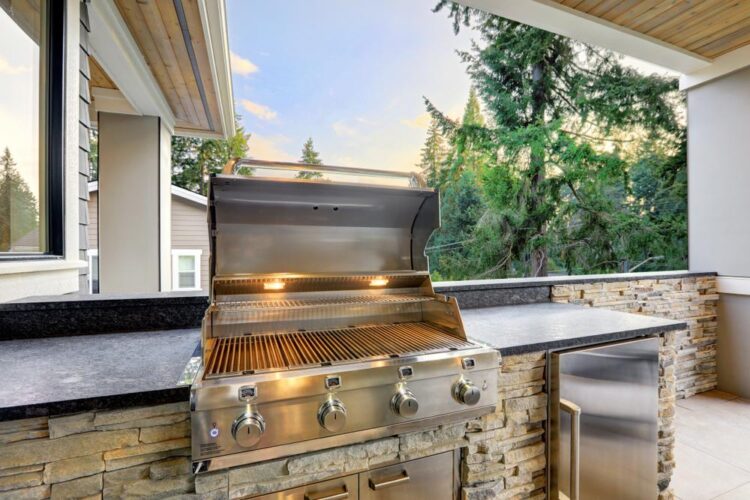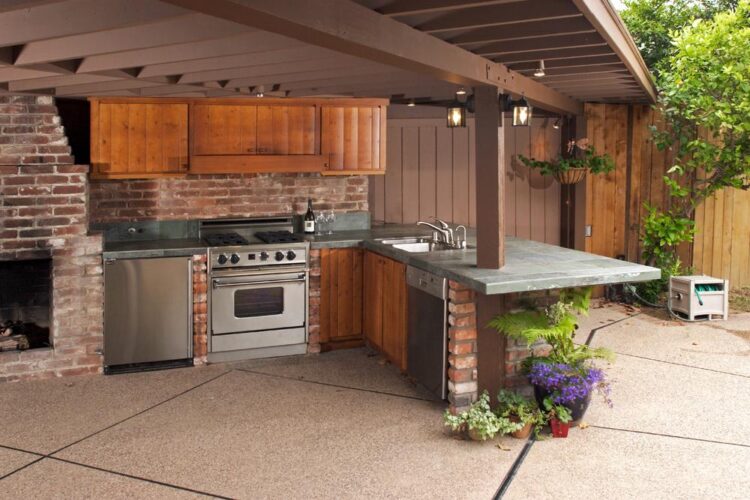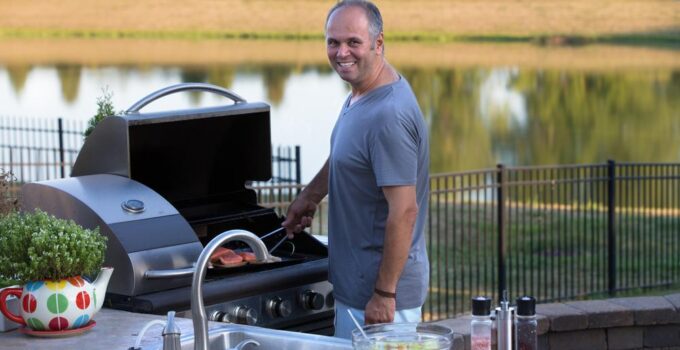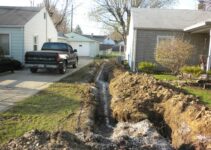An outdoor kitchen provides a joyous space for gathering family and friends to enjoy good food and drink. It’s a great way to get a little more outdoors in your life and potentially add some value to your property while you’re at it.
If you’re considering adding an outdoor kitchen to your home, here are the beginnings of what you need to know. Below, we’ll take you through some of the most important considerations of an outdoor kitchen project—from building the basic framework to selecting a waterproof enclosure for the electrical equipment.
Page Contents
Outdoor Kitchens: Basic Design Considerations
The following are the basic elements of many outdoor kitchens. Some are pretty much required, while others are nice extras some people will want:
- Cooking Equipment: Much like an indoor kitchen, cooking surfaces, such as a grill or stovetop, will usually be a focal point of an outdoor kitchen. The specific type of equipment you use will vary widely by what kind of cooking you plan to do, but almost all outdoor kitchens include at least a barbecue grill (whether gas or charcoal).
- Countertops: These provide a workspace for preparing food, mixing drinks, and other important outdoor kitchen tasks.
- Sink: Necessary for washing various types of food and can serve as a beverage cooler when you’re not making food.
- Refrigerator: It’s not strictly necessary for every kitchen, but many outdoor kitchens include a mini fridge for easy storage of food and beverages. If you’re doing any kind of serious cooking outdoors, you’ll probably want one.
- Cabinets: Most outdoor kitchens include cabinets for holding cooking essentials, service ware, and cleaning supplies.
- Lighting: You’ll need at least task lighting above your grill and countertops, and preferably a pleasant overhead light for general use.
- Fireplace: A fireplace is a popular outdoor kitchen addition that makes an ideal spot for enjoying good company.
- Bar Equipment: Some people who design their outdoor kitchens for bar service add specialized bar equipment, such as kegerators.
- Entertainment Devices: Speakers, TVs, and more can enhance the vibe in your outdoor kitchen.
- Smoker: If you’re a big-time carnivore, a smoker is a great way to fix up some delicious meats.
Outdoor Kitchen Layout
An efficient layout is a critical part of any kitchen, and outdoor kitchens are no exception. Here are some tips for achieving an optimal layout in your outdoor kitchen:
- Some kitchen design professionals recommend using a triangle as the basic layout structure of an outdoor kitchen. The sink, cooking surface, and refrigerator each form one point of the triangle, and no two elements should have a distance of more than about 10 feet between them.
- Island counters are as popular in outdoor kitchens as they are in indoor ones, and perhaps even more so. An island counter allows you to face your guests and engage in conversation while you’re preparing the food.
- Kitchens designed in a straight line are a popular choice for simpler outdoor kitchens that don’t need space for multiple people to work simultaneously.
- Think about what other outdoor areas your outdoor kitchen will be integrated with. Many people’s outdoor kitchens border a pool area or will include a dining patio—and almost every backyard will have landscaping considerations that affect kitchen design and placement.
Outdoor Kitchen Utilities
- Electric: For lights and any appliances you plan to run, you’ll need electricity in your outdoor kitchen. Depending on your power needs, it may be a good idea to put your outdoor kitchen on its own circuit.
- Water: Most people will want a sink in their outdoor kitchen which will require plumbing. Remember, a hot water supply will also require insulating your pipes.
- Gas: Having a dedicated natural gas supply for your grill is nice, but a standard propane tank is usually sufficient and will save you some money.
Outdoor Proofing Your Kitchen

Source: shutterstock.com
Obviously, an outdoor kitchen will be exposed to the elements in ways an indoor kitchen never will be. So, how can you keep your outdoor kitchen in excellent working order?
First, consider how you’ll cover your outdoor kitchen. Most outdoor kitchens include some kind of cover to protect them from the elements, such as a pergola or multi-season porch. Second, it’s important to consider the materials you use for each element of your kitchen:
- Sinks: Almost all outdoor kitchens use stainless steel for their sinks.
- Countertops: Stone countertops, such as granite or quartzite, are popular choices for their durability, but they do still stain, so having them sealed is a good idea. Stainless steel is another popular choice.
- Cabinets: Stainless steel is the standard for most outdoor kitchens, but the marine-grade polymer is an increasingly popular option for the increased number of customization options it provides.
- Flooring: Textured concrete is the most common option because it’s durable and offers a better grip for your feet, but brick and stone are also good choices. Avoid any tile that will become slick when it gets wet.
- Electrical: Make sure your electrical installation includes GFCI outlets to prevent dangerous shorts, as well as covers for all outlets. Any essential electrical equipment should be protected by an outdoor enclosure made from an outdoor-grade material, such as polycarbonate or stainless steel.
- Water: If you live in a colder climate, you’ll need to winterize your pipes so they don’t freeze. Make sure you have a way to remove the water from the system when winterizing your pipes.
Building the Kitchen: DIY or Professional?
It’s definitely possible for someone with a basic knowledge of carpentry to build a DIY outdoor kitchen. Putting together a simple wooden frame around a grill and some cabinets is reasonably easy, and even some basic countertops are usually possible to DIY.
However, if you want anything more complex than a grill with a countertop and cabinets attached, you should usually hire a professional construction contractor to build your outdoor kitchen. At the very least, a licensed professional should do any wiring or plumbing your outdoor kitchen needs.

Source: shutterstock.com
An outdoor kitchen is a long-term investment in your home, so make sure you can devote the resources to doing it right before beginning the project. When built correctly, an outdoor kitchen will give you and your family a place you can enjoy for years to come.





